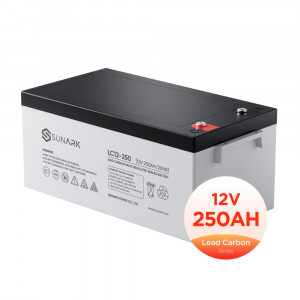| SunEvo Solar Co., Ltd. |

| Registration Date | 10 Oct 2023 |
| Revision Date | 10 Oct 2023 |
| Share |
Renewable Energies Batteries
BatteryGraphene
C Graphene CAS Number : 7782-42-5
LC series lead-carbon batteries use functional activated carbon and graphene as carbon materials, which are added to the negative plate of the battery to make lead carbon batteries have the advantages of both lead-acid batteries and super capacitors.
The main application of Lead-carbon battery is Energy Storage. Lead-carbon battery has the fast recharge and big current charge/discharge function to offer stable performance. Adding carbon is to eliminate the polarization of the negative electrode. Under the same process conditions, the charging voltage of lead acid battery without carbon can reach to 16V ~ 17V, and the lead-carbon battery voltage is 15.5V ~ 16.5V only. Our lead-carbon technology battery's recharge voltage is controlled at approx 14.6V, about 1V lower under the same process than those with less carbon. Furthermore, lead-carbon offered fast recharge function, because of its electrical conductivity and thermal conductivity, which can save 40% ~50% charging time.
Lead-carbon batteries are the most advanced technology in the field of lead-acid batteries, and are also the development focus of the international new energy storage industry, with very broad application prospects. Energy storage battery technology is one of the key technologies restricting the development of new energy storage industry. Energy storage fields such as photovoltaic power station energy storage, wind power energy storage and grid peak regulation require batteries to have the characteristics of high power density, long cycle life and low price.
Lead-carbon batteries, lithium-ion batteries and flow batteries are the three major development directions of new energy storage batteries.
Among them, the cost of lithium battery is relatively high, and the consistency problem still exists; the cost of liquid flow battery is also high; and lead-carbon battery is a relatively practical and feasible energy storage technology route. Ordinary lead-acid batteries have the advantage of low cost, but their short cycle life leads to higher energy storage costs per unit of time. Due to the addition of activated carbon, the lead-carbon battery prevents the sulfation of the negative electrode, prolongs the battery life, and reduces the cost per unit of use. It has great potential for development in the field of new energy storage.
Lead-carbon batteries have been greatly improved in terms of cycle life and power charge-discharge performance under partial state of charge. Coupled with advantages such as cost, the application of lead-carbon technology in various energy storage systems has been greatly improved.
China is still in the initial stage of energy storage industrialization, and is in a state of coexistence of various energy storage technologies. Whether it is lead-carbon batteries, lithium batteries, or flow batteries, they will have different advantages in different application fields. Mainstream energy storage technologies will be chosen by the market.